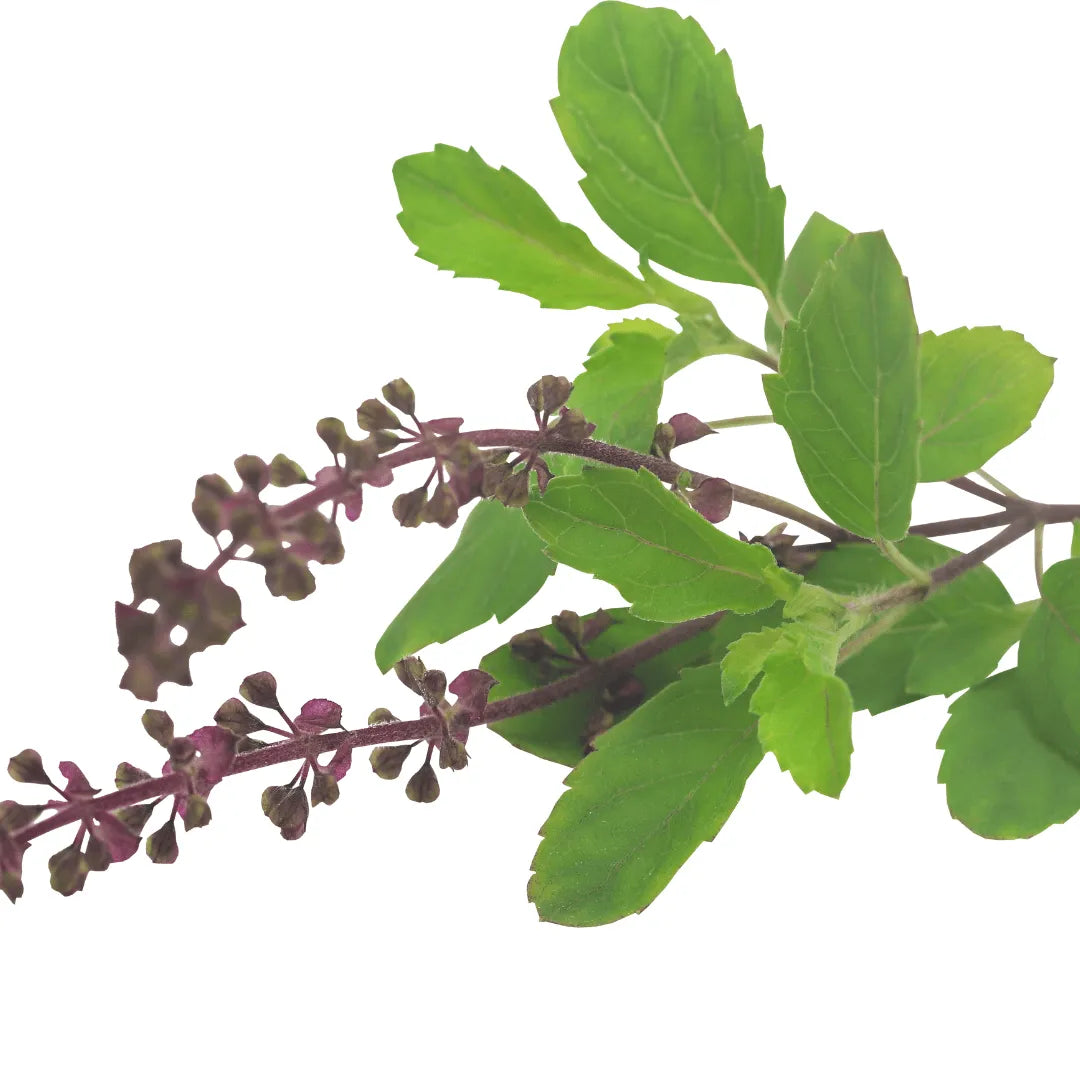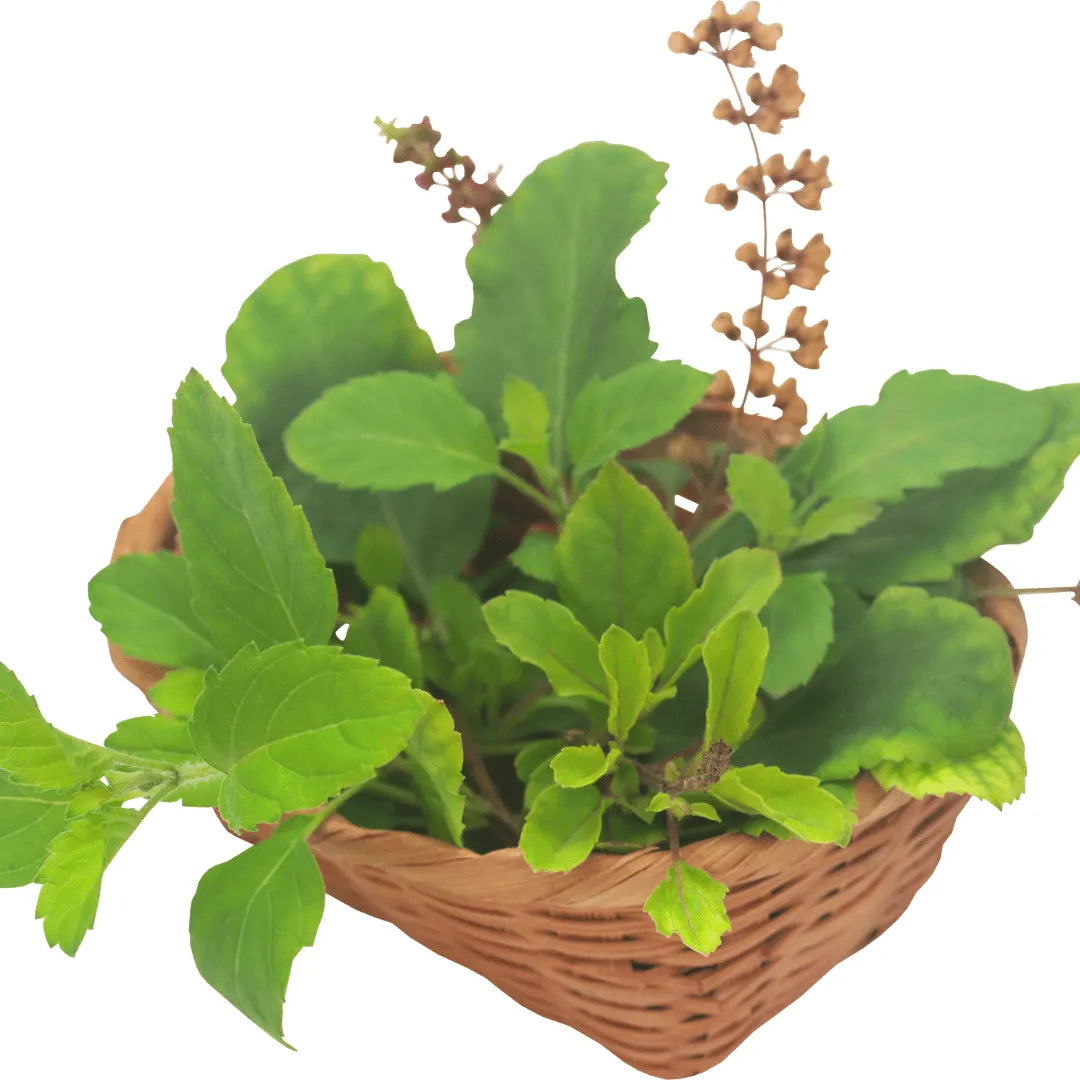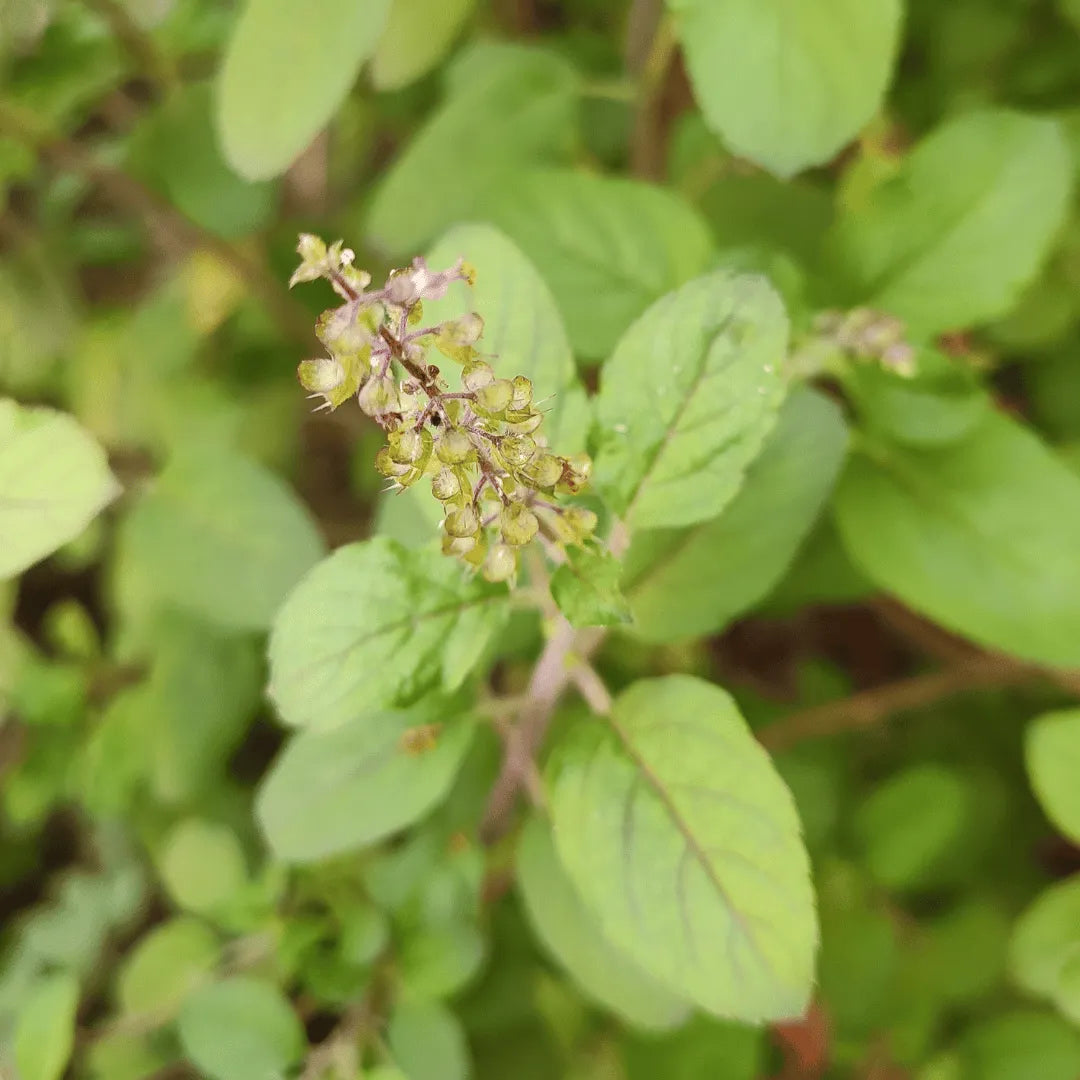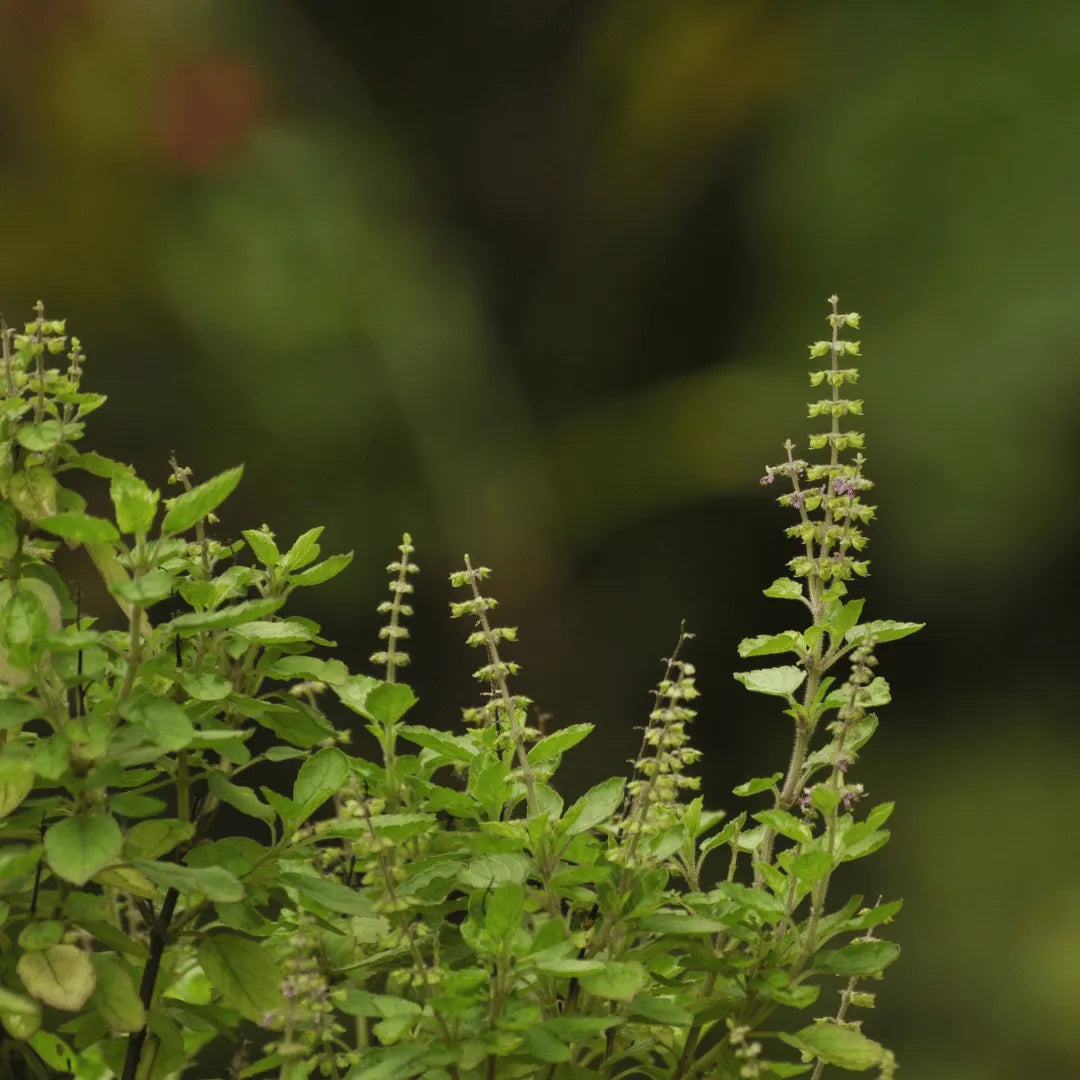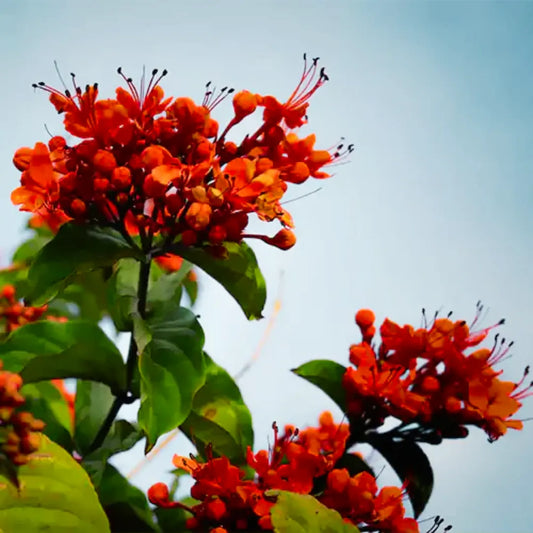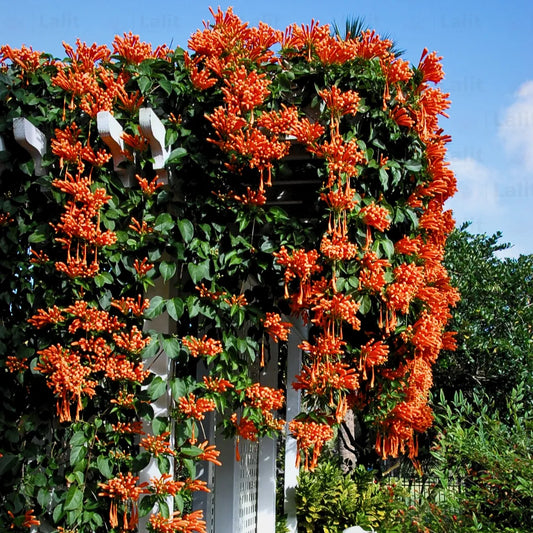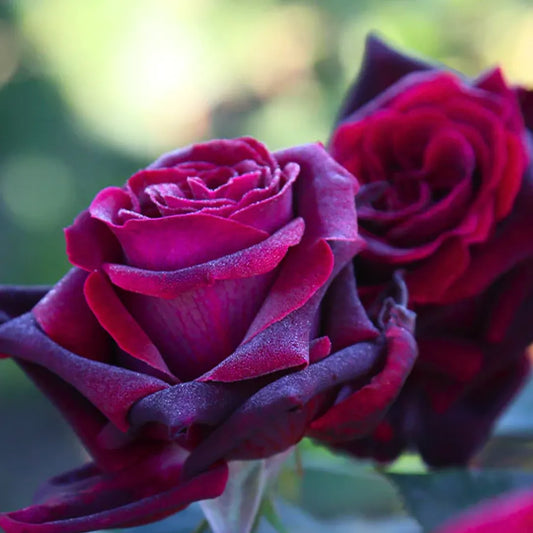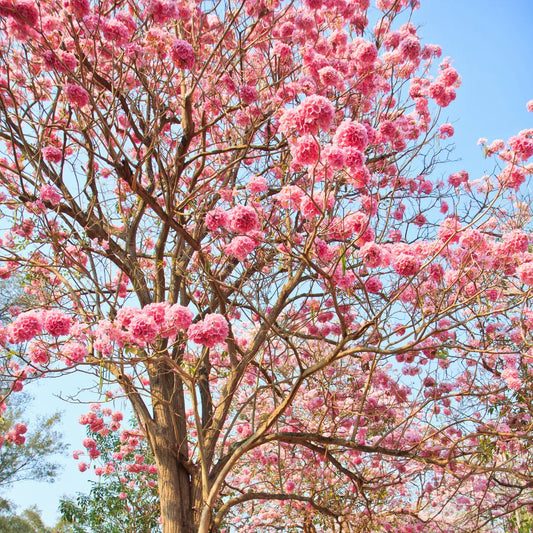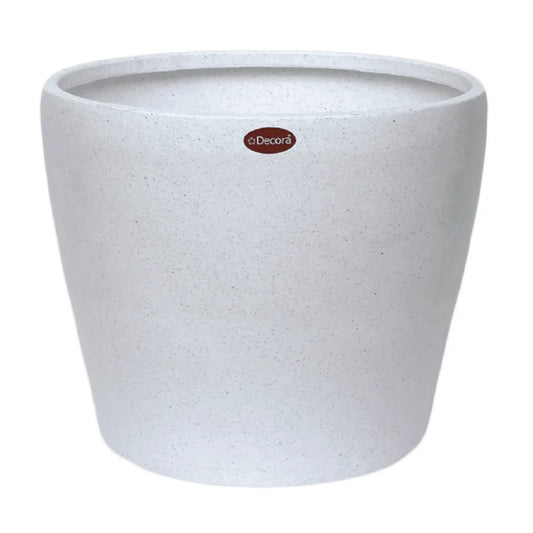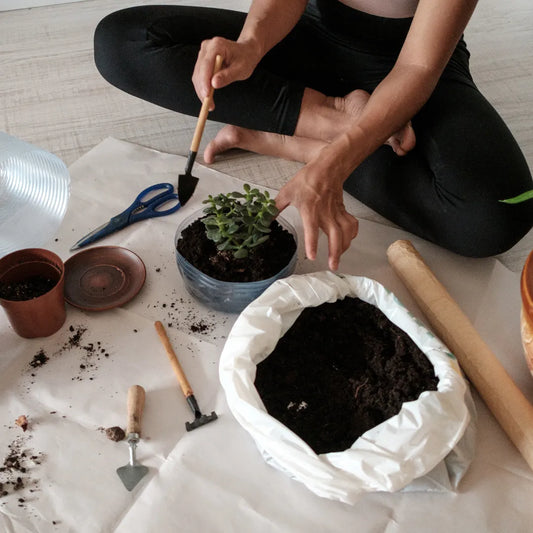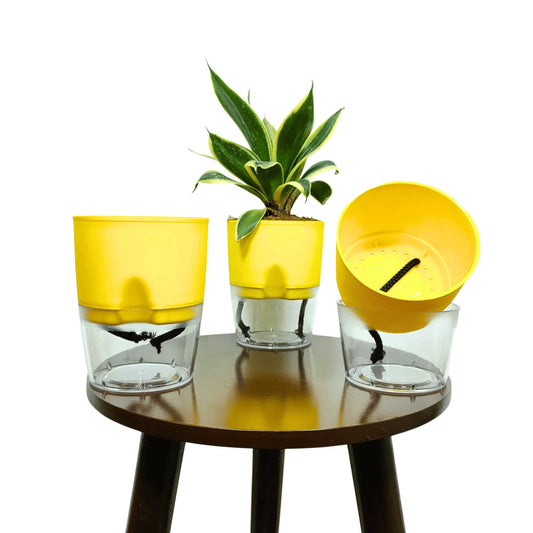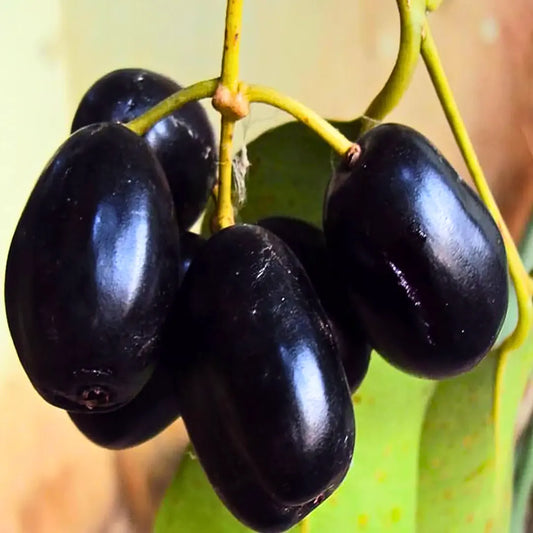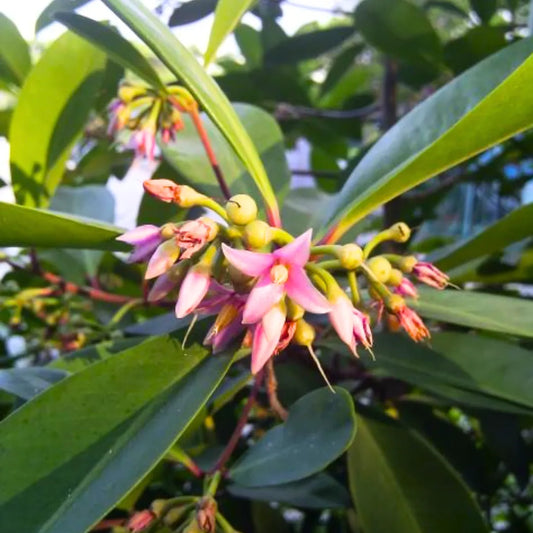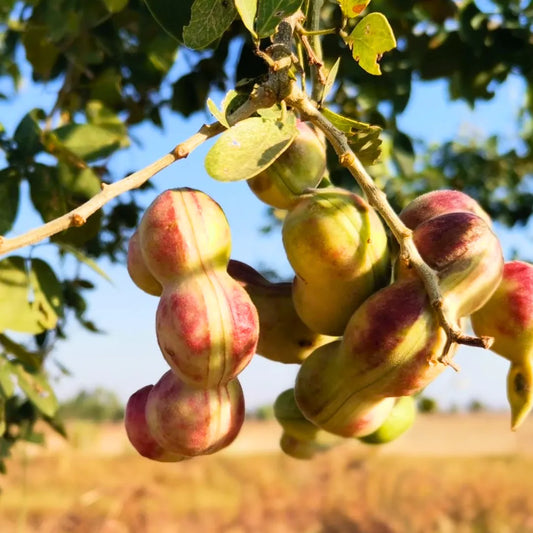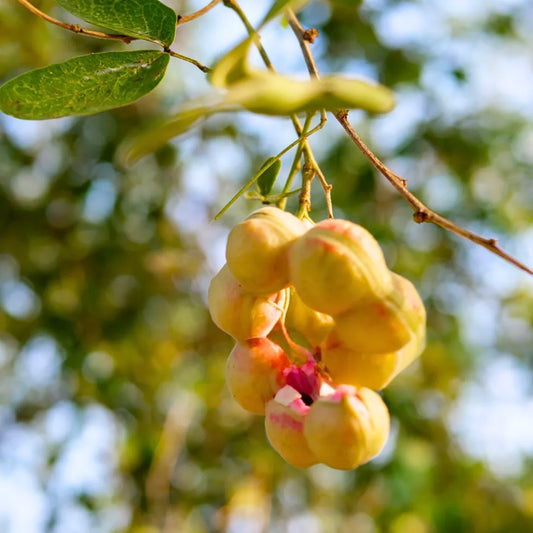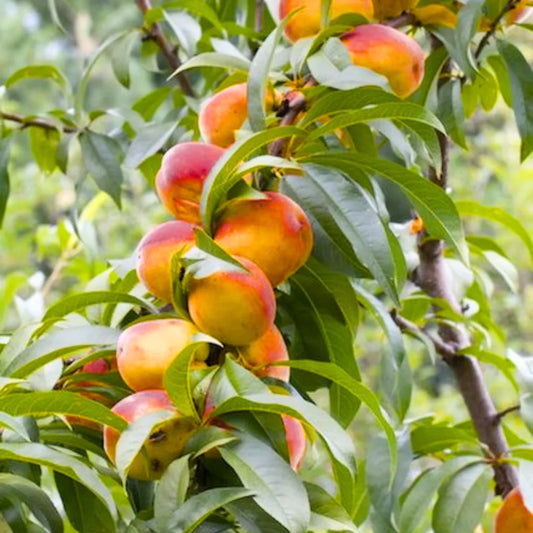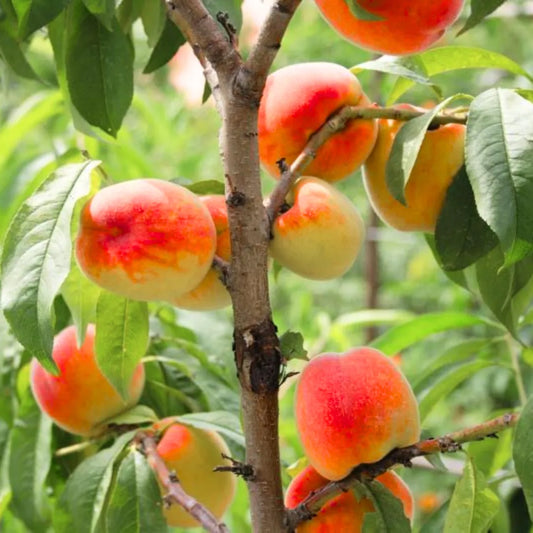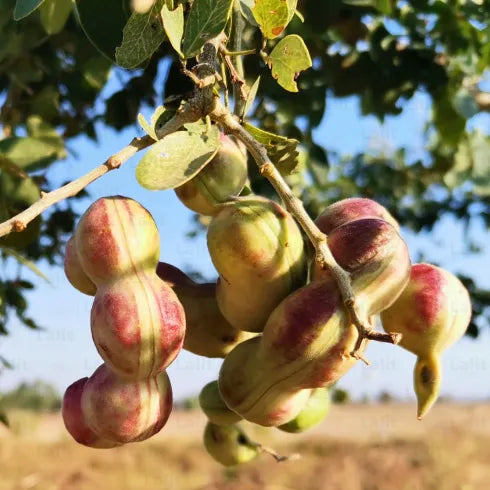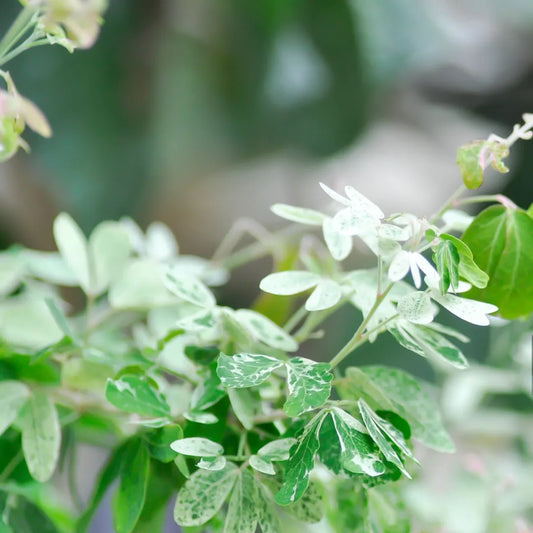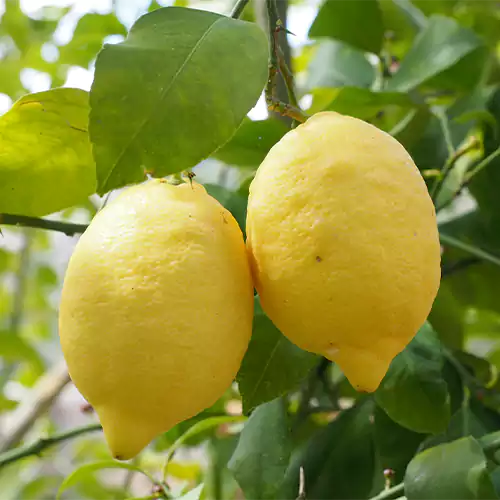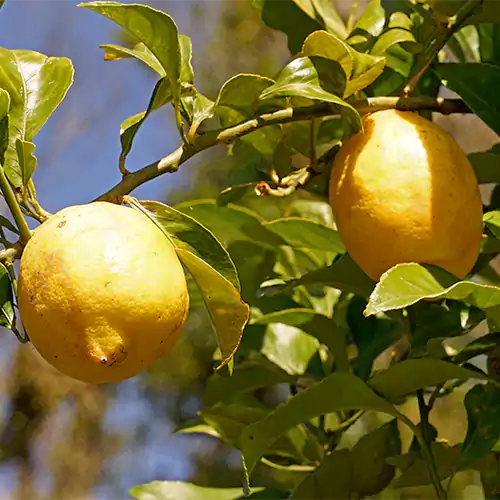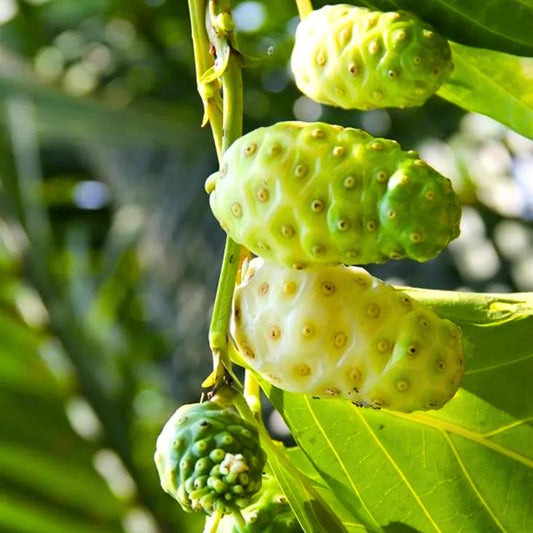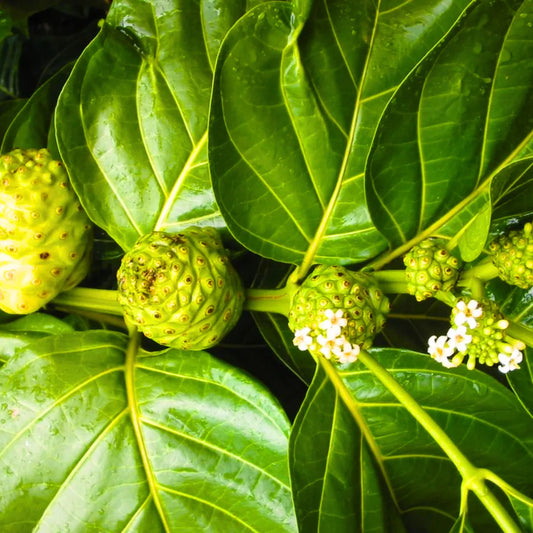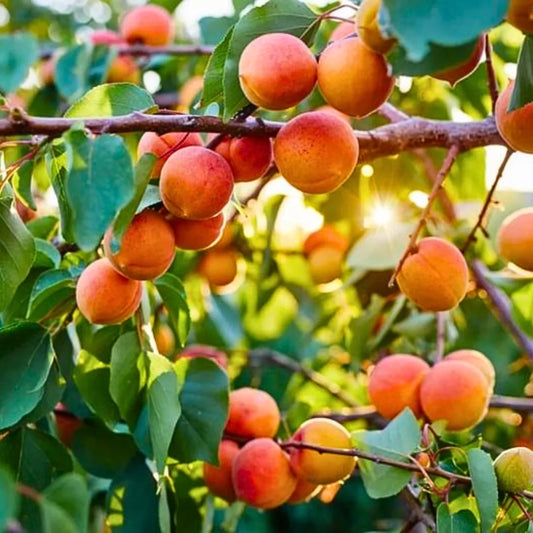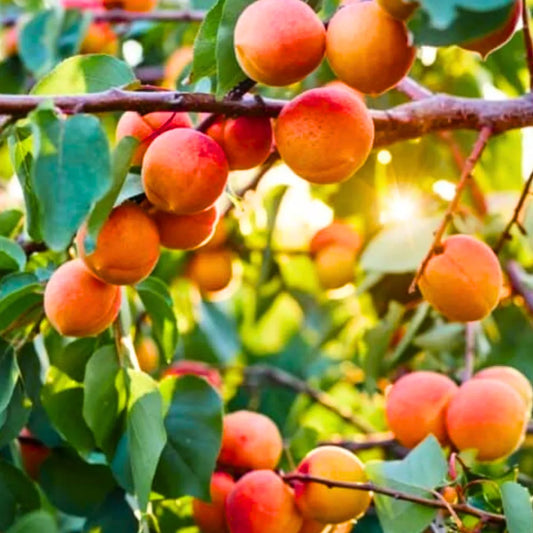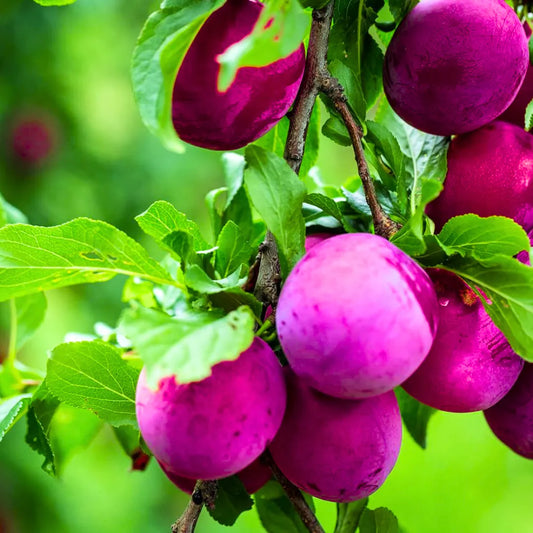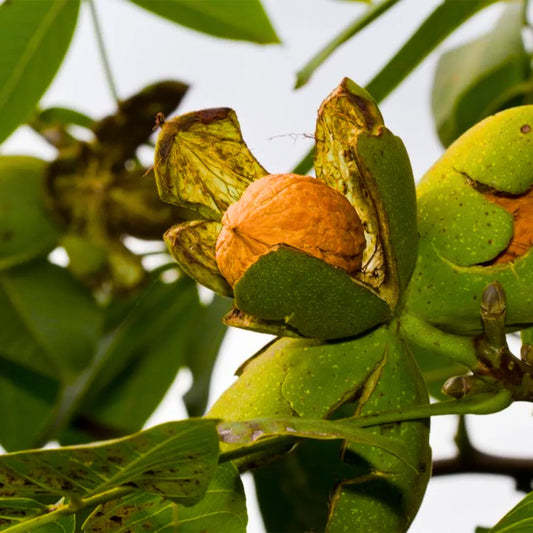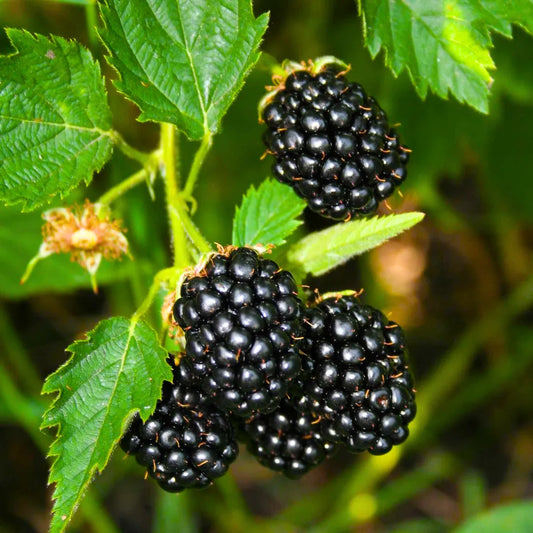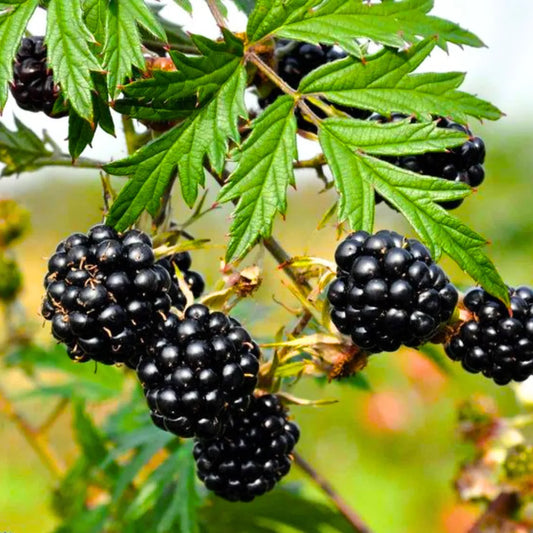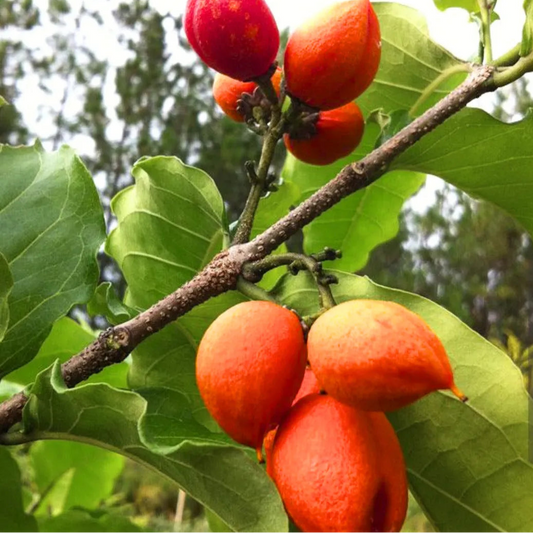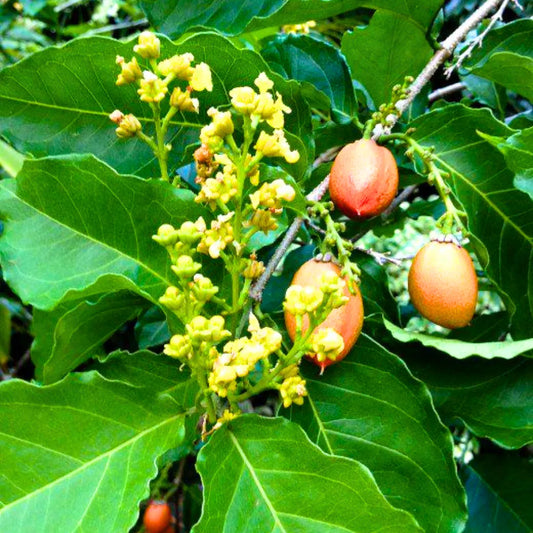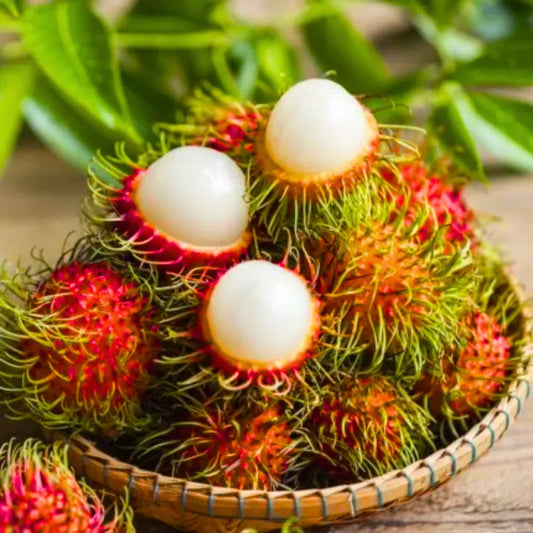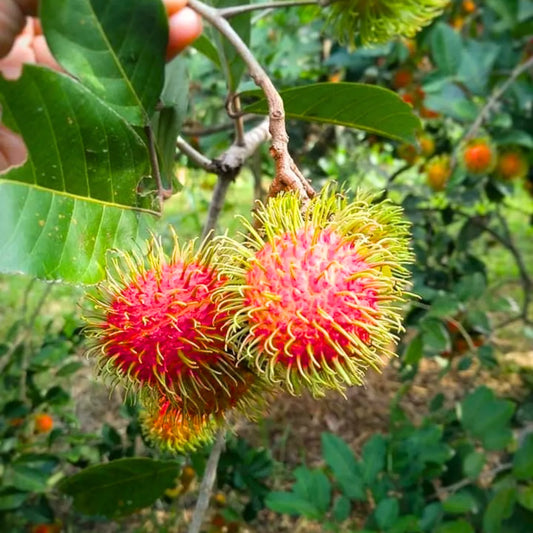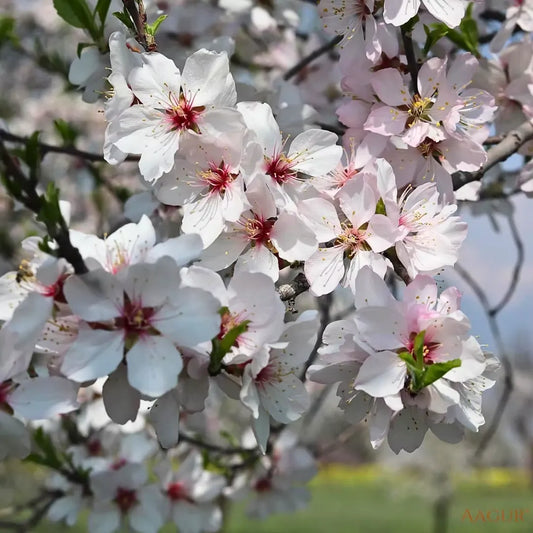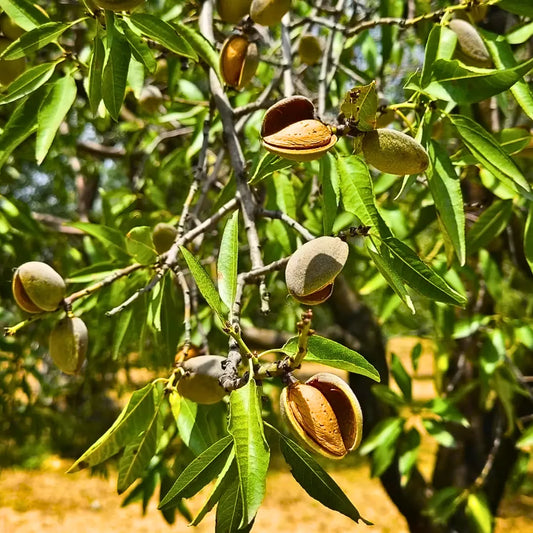Rama Tulsi (Ocimum gratissimum)
Rama Tulsi (Ocimum gratissimum)
Couldn't load pickup availability
Share this product
Note: Plants may slightly differ from shown images depending on Season and growth pattern
Questions? Speak with our Experts: 797-436-5167
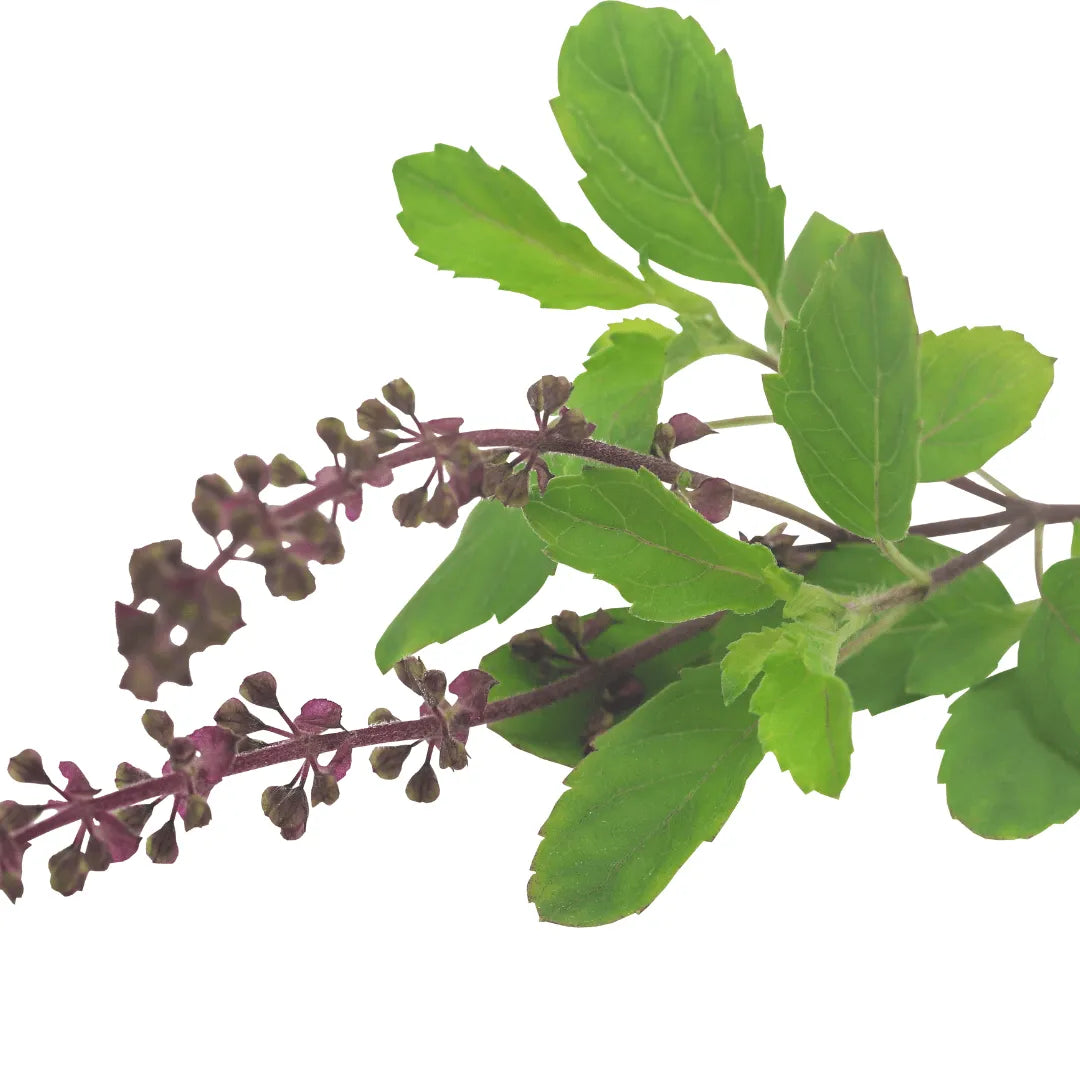
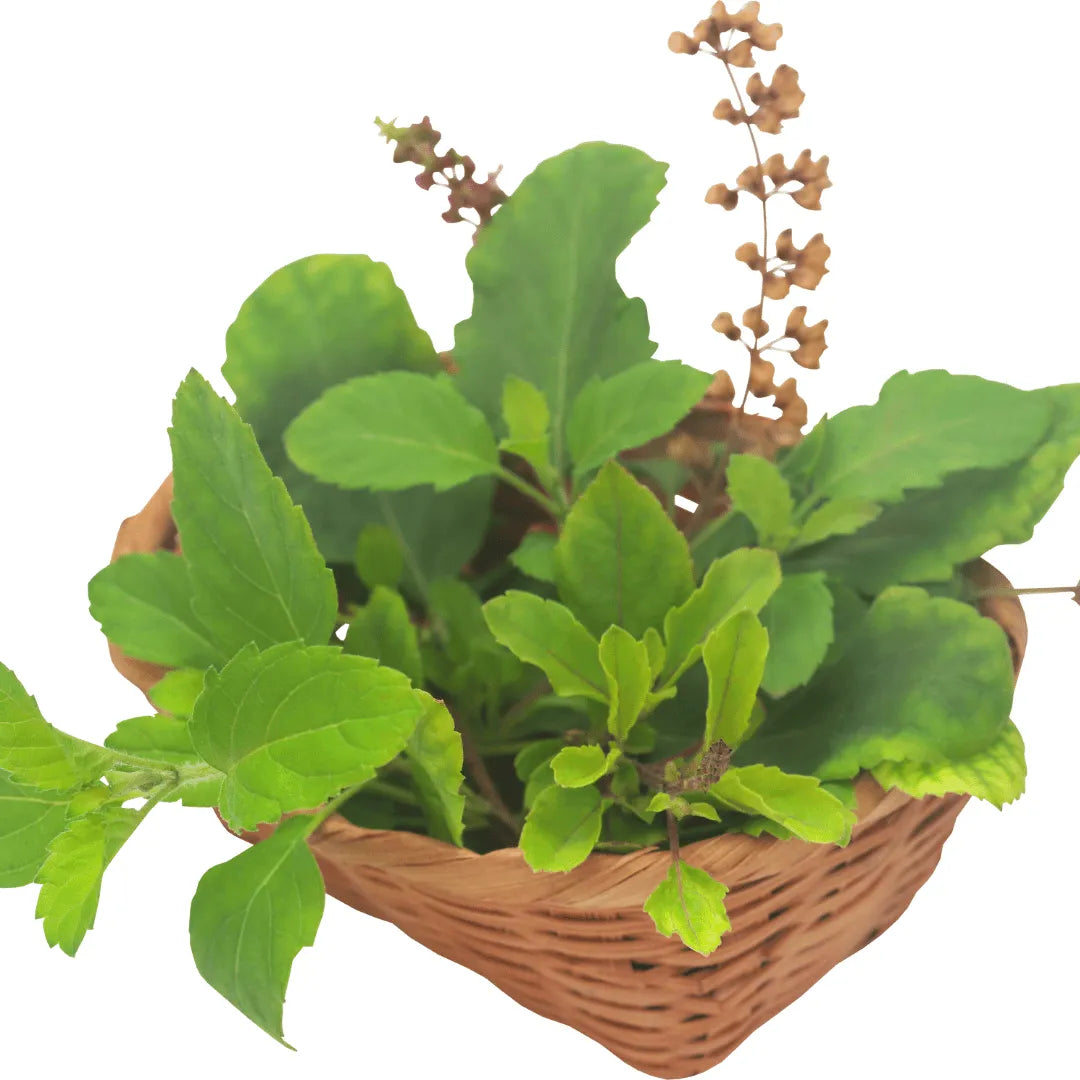
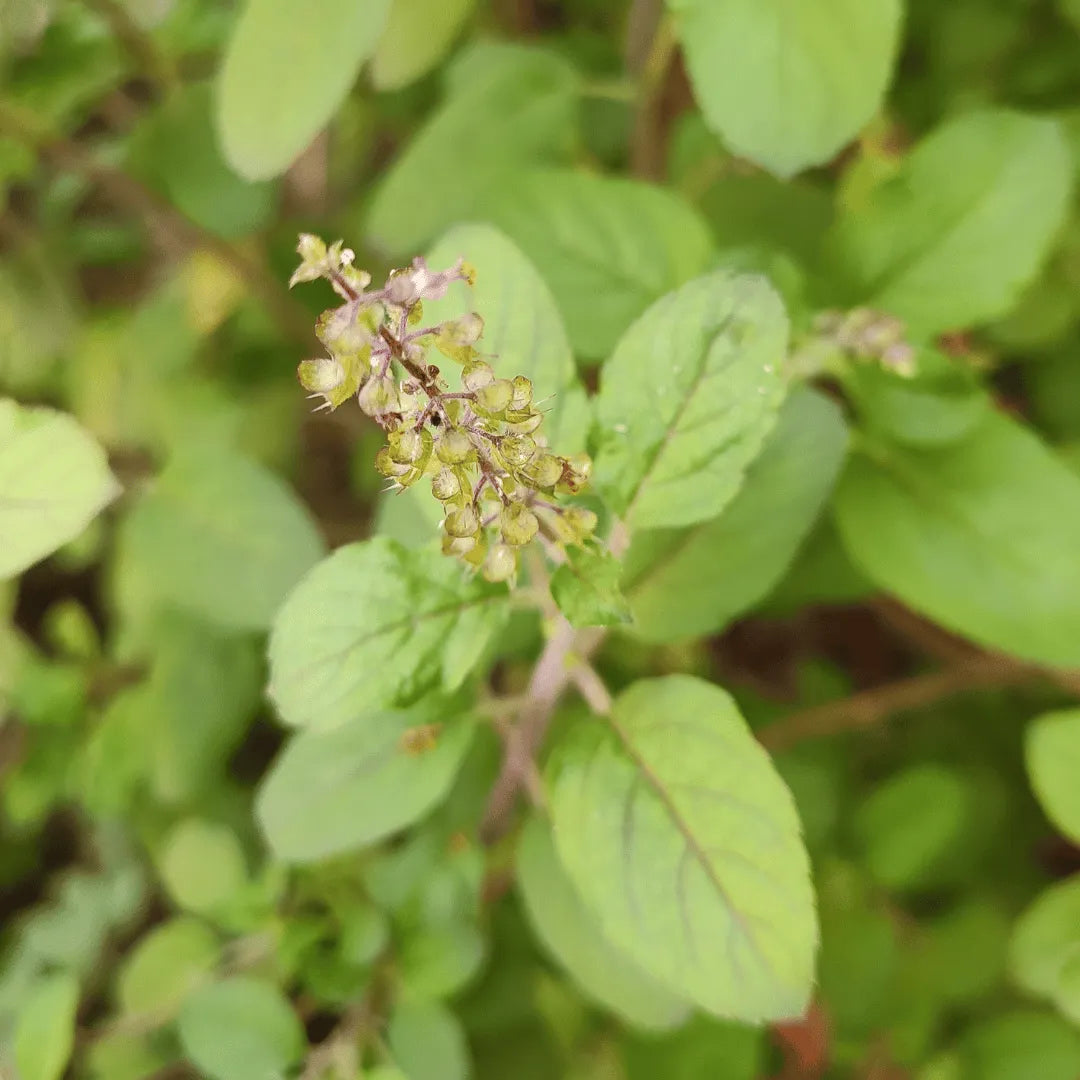
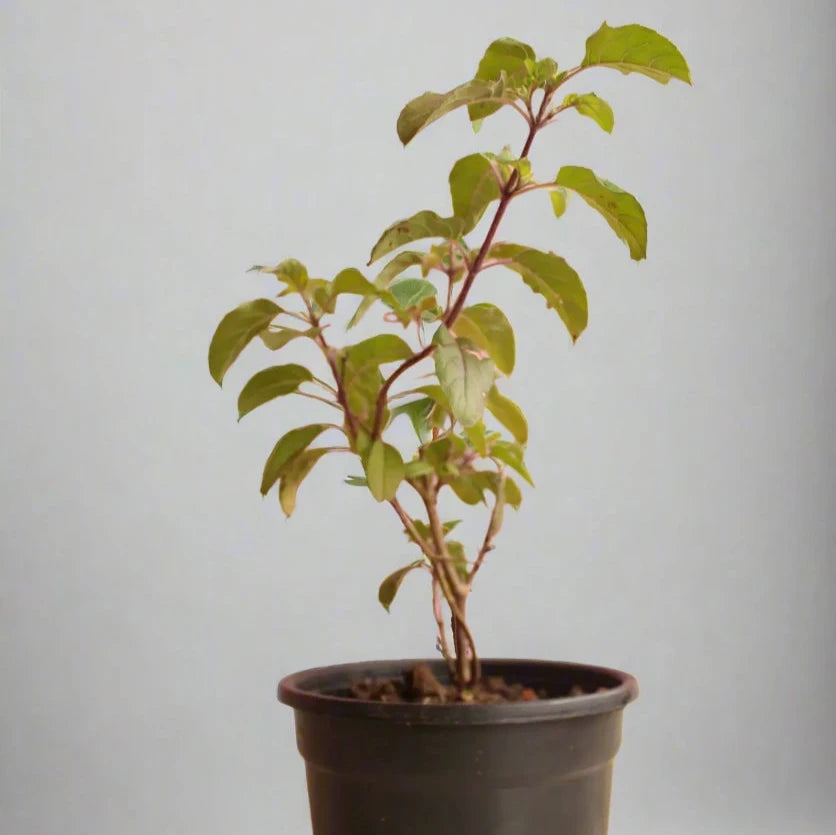
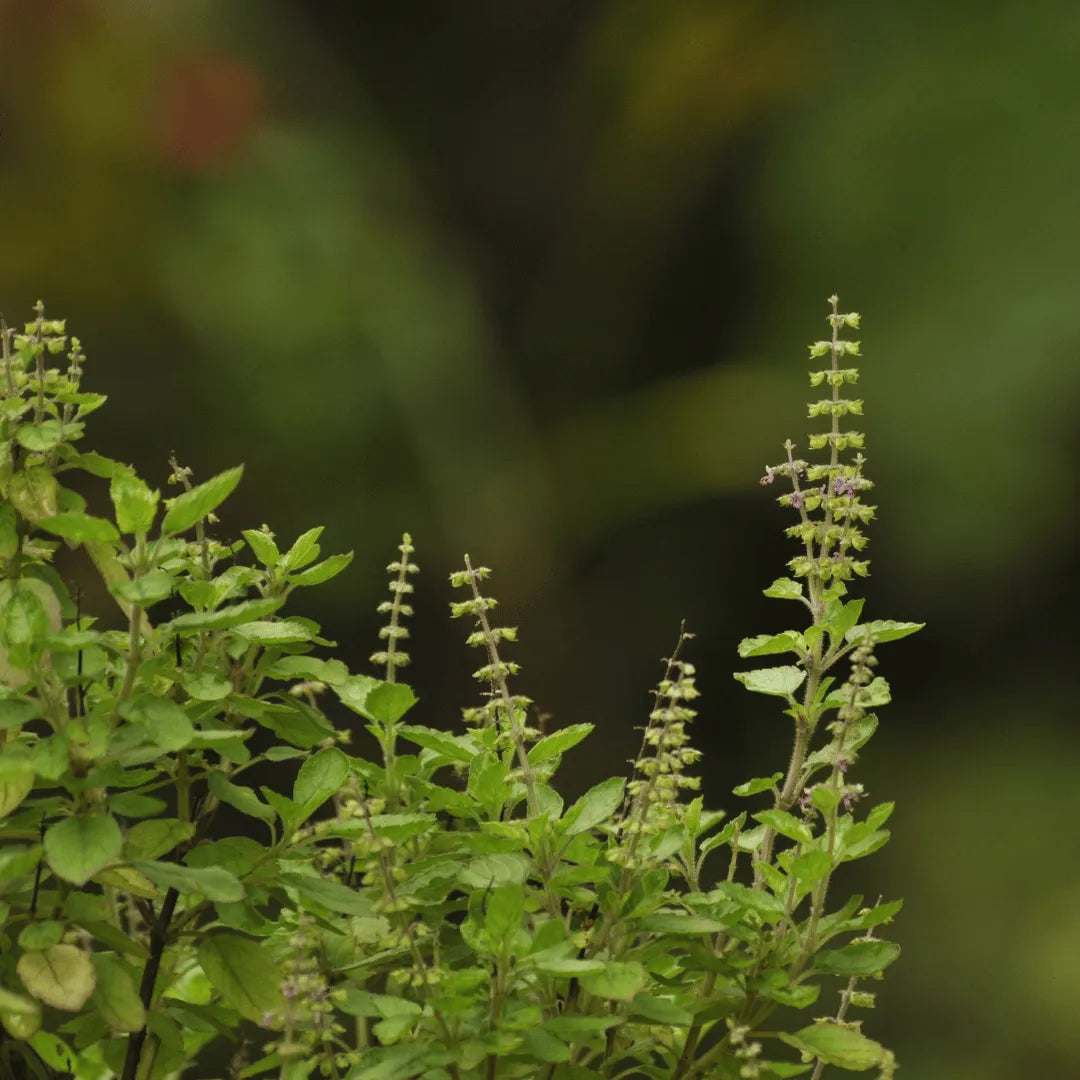
Description
Tulsi Plant
Indian Name: Tulsi (also tulasī)
Botanical Name: Ocimum tenuiflorum
Family: Lamiaceae
Parts Use: Leaves, Seed, Whole body
Description
Tulsi is native to India, where it often graces shrines and homes as an aromatic perennial shrub. Tulsi is grown as an annual herb in temperate climates. The tulsi plant is pleasing to the eye, with an upright, open and branching form. The fragrance of the leaves is also quite attractive-spicy and complex, often resembling clove. The taste is excellent, especially when the dried leaves are brewed into tea. The flowers of purple or blue occur on multiple upright racemes.
Types of Tulsi
Four main forms are generally recognized
Krishna Tulsi (Ocimum sanctum) with leaves of purple, Rama Tulsi (Ocimum sanctum) with stems of purple,
Kapoor Tulsi (Ocimum sanctum) with leaves of green, and Vana Tulsi (Ocimum gratissimum), which is unmodified from its wild form. Tulsi exhibits great variation across its range and among the several domesticated cultivars. Variations in soil type and rainfall may also equate to a difference in the size and form of the plants as well as their medicinal strength and efficacy.
Cultivation
Tulsi seed is easy to germinate and grow. Sow the small Tulsi seeds in early spring indoors or in the greenhouse for an early start, or sow Tulsi seed directly in the spring or summer garden. Sow Tulsi seeds just under the surface of the soil and press in firmly. Keep Tulsi seed watered and warm until germination, which occurs within 2 to 3 weeks (faster for Kapoor). Tulsi prefers full sun, rich soil, and plenty of water. Thin or transplant to 1 to 2 feet apart. Tulsi does well in pots or window boxes and is traditionally grown for good luck near the front door of the house.
Climatic conditions for growth
Rama Tulsi (Ocimum gratissimum)
Tulsi seed is easy to germinate and grow. Sow the small Tulsi seeds in early spring indoors or in the greenhouse for an early start, or sow Tulsi seed directly in the spring or summer garden. Sow Tulsi seeds just under the surface of the soil and press in firmly. Keep Tulsi seed watered and warm until germination, which occurs within 1 to 2 weeks. Tulsi prefers full sun, rich soil, and plenty of water. Thin or transplant to 1 to 2 feet apart. Tulsi does well in pots or window boxes and is traditionally grown for good luck near the front door of the house.
Purchase Advice: The Best time to buy this herb:
December to January
Benefits of Tulsi
- Helps relieve stress/adaptogen
- Bolsters immunity
- Helps Enhances stamina
- Provides support during the cold season
- Helps Promotes healthy metabolism
- A natural immuno-modulator
Quality of Tusli
- Leaves
- Whole Plant
Dimensions
Dimensions
All measurements are presented as a range because each plant is unique; its size and shape vary with the season.
6"inches pot: Plant height: - 8"-12"inches (bushy)
Shipping Details
Shipping Details
In General our team requires 1-2 Days for Processing the Plants and further 3-4 days for it to reach your Home Safely
Our team makes sure to selects only the healthiest, happiest plants for you. We pack them with extra love and care, making sure they have everything they need for a safe and comfortable journey to your doorstep.
We deliver quickly and safely across the country, so your new plant arrives fresh and ready to thrive.
Questions? Speak with our Experts: 797-436-5167
On Bloom This Season
-
Clerodendrum Splendens "Flaming Glorybower" - Plant
No reviewsRegular price From Rs. 449.00Regular priceUnit price / perRs. 700.00Sale price From Rs. 449.00Sale -
Trumpet Vine (Pyrotegia Venusta) - Plant
No reviewsRegular price From Rs. 349.00Regular priceUnit price / perRs. 500.00Sale price From Rs. 349.00Sale -
Jacaranda Mimosifolia "Neel Mohar" - Plant
No reviewsRegular price From Rs. 549.00Regular priceUnit price / perRs. 750.00Sale price From Rs. 549.00Sale -
Black Lady Rose - Plant
No reviewsRegular price From Rs. 599.00Regular priceUnit price / perRs. 800.00Sale price From Rs. 599.00Sale -
Tabebuia Rosea (Rosy Trumpet Tree) "Pink Poui" - Plant
2 reviewsRegular price From Rs. 549.00Regular priceUnit price / perRs. 750.00Sale price From Rs. 549.00Sale
Gardening Add-Ons
-
Decora Pots (Premium Quality) " Gleyz vertical”- “Code – GV”
No reviewsRegular price From Rs. 873.00Regular priceUnit price / per -
Vermicompost- Nutrient Rich Soil Mix (1KG)
No reviewsRegular price Rs. 99.00Regular priceUnit price / per -
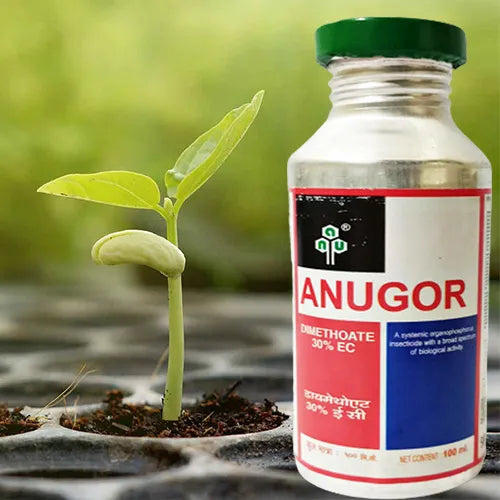 Sold out
Sold outInsecticide | Anugor Insecticide
No reviewsRegular price Rs. 165.00Regular priceUnit price / per -
LOBELLO Premium Quality self watering pot
No reviewsRegular price From Rs. 99.00Regular priceUnit price / per -
Cocoliner Supporting Poles (Coir Poles)
No reviewsRegular price Rs. 150.00Regular priceUnit price / perRs. 199.00Sale price Rs. 150.00Sale
Best Selling Fruit Plants
-
Thai KG 10 Jamun (Syzygium Cumini) - Plant
No reviewsRegular price Rs. 1,449.00Regular priceUnit price / perRs. 1,950.00Sale price Rs. 1,449.00Sale -
Ardisia Elliptica (Duck's eye, Coralberry) - Plant
No reviewsRegular price Rs. 1,249.00Regular priceUnit price / perRs. 1,700.00Sale price Rs. 1,249.00Sale -
Jungle Jalebi "Thornless" (Pithecellobium Dulce) - Plant
No reviewsRegular price Rs. 1,399.00Regular priceUnit price / perRs. 1,850.00Sale price Rs. 1,399.00Sale -
Grafted Peach (Prunus Persica) Aadu – Plant
No reviewsRegular price Rs. 1,449.00Regular priceUnit price / perRs. 2,100.00Sale price Rs. 1,449.00Sale -
Jungle Jalebi white (Pithecellobium Dulce) Manila Tamarind - Plant
No reviewsRegular price Rs. 749.00Regular priceUnit price / perRs. 1,000.00Sale price Rs. 749.00Sale -
Kaagazi Nimboo, Lemon – Plant
No reviewsRegular price From Rs. 499.00Regular priceUnit price / perRs. 750.00Sale price From Rs. 499.00Sale -
Noni (Morinda Citrifolia) - Plant
No reviewsRegular price Rs. 1,399.00Regular priceUnit price / perRs. 2,100.00Sale price Rs. 1,399.00Sale -
Apricot (Prunus Armeniaca) - Plant
No reviewsRegular price Rs. 1,399.00Regular priceUnit price / perRs. 2,100.00Sale price Rs. 1,399.00Sale -
Plum (Prunus Domestica) Aloo Bukhara - Plant
No reviewsRegular price From Rs. 599.00Regular priceUnit price / perRs. 800.00Sale price From Rs. 599.00Sale -
Walnut (Juglans Regia) - Plant
No reviewsRegular price Rs. 649.00Regular priceUnit price / perRs. 900.00Sale price Rs. 649.00Sale -
Blackberry (Rubus Fruticosus) - Plant
No reviewsRegular price Rs. 1,499.00Regular priceUnit price / perRs. 2,000.00Sale price Rs. 1,499.00Sale -
Peanut Butter (Bunchosia Glandulifera) - Plant
No reviewsRegular price From Rs. 649.00Regular priceUnit price / perRs. 850.00Sale price From Rs. 649.00Sale -
Rambutan N18 (Nephelium Lappaceum) - Plant
No reviewsRegular price Rs. 1,149.00Regular priceUnit price / perRs. 1,700.00Sale price Rs. 1,149.00Sale -
Kashmiri Almond (Badam) - Plant
No reviewsRegular price From Rs. 749.00Regular priceUnit price / perRs. 1,000.00Sale price From Rs. 749.00Sale
this is my second purchase from Lalit ent. From Bhopal to Mumbai. Nice timely delivery. Healthy plant. Both desi hibiscus and Rama Tulsi healthy plants
Let customers speak for us
from 70 reviewsthis is my second purchase from Lalit ent. From Bhopal to Mumbai. Nice timely delivery. Healthy plant. Both desi hibiscus and Rama Tulsi healthy plants
Packaging 5 Stars
Delivery time 4 Stars.
Plant quality - Healthy
Plant size - As expected
Shipped through Nursery Nisarga via Delhivery
Plant arrived healthy and in excellent packaging. Best packaging I've seen from any online nursery. Thanks nursery Nursery Nisarga
The plant was very fresh and neatly packed. The delivery was quicker than I expected and very pleased with it. Doesn’t have any flowers yet but I’m very sure it’ll bloom some wonderful flowers as time progresses.
Good packing
I recently purchased Kalpvriksha plant from Lalit Enterprise, it delivered in very good condition
Nice packaging. thanks
My alocasia has been an absolute delight... While the first few leaves started to turn yellow initially, I kept caring for the plant as recommended, and to my joy, it began to thrive beautifully. Now it graces my home with lush, vibrant foliage and adds a tropical charm that’s simply unmatched. It's a resilient and rewarding plant that truly transforms with the right care. Highly recommended...
Its beautifully variegated foliage, with shades of green and creamy yellow, adds a touch of sophistication to any space. The plant I received was well-packaged, healthy, and ready to thrive. It has quickly become the centerpiece of my indoor garden. Caring for it is simple, making it a great choice for both beginners and seasoned plant enthusiasts. If you're seeking a plant that's equal parts stylish and low-maintenance, this one's a winner....
The plant arrived in perfect condition, and its furry, rabbit like rhizomes are such a delight….. truly unique and charming. It's a breeze to care for, needing just the right amount of indirect light and moisture to thrive. The lush, vibrant green leaves have added a touch of natural elegance to my space, and it's quickly become a favorite in my plant collection. Lalit Enterprises provided top-notch service with fast delivery and excellent packaging. Highly recommend both the Rabbit Foot Fern and Lalit Enterprises to anyone looking to add a stunning plant to their home....
Plants are too awesome and healthy condition plants I will place more orders in future
plant very good condition packing is very good
M from Bangalore was not sure if I will get plant in 1 pc the packing was really good an plant was also healthy thank you
I received the rose creeper plants in excellent condition. The packaging was outstanding and professionally done, ensuring the plants arrived safely. The seller's attention to detail and care is commendable. I highly recommend this seller to anyone looking for good-quality plants and reliable service.
Received healthy plant with good variagation. Packaging and medium was very nice.


